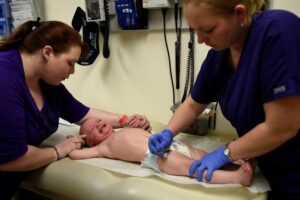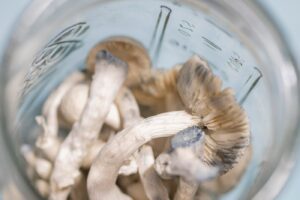Vitamin D supplementation may safely reduce the overall risk for acute respiratory infection compared with placebo, but the risk reduction is small and the relevance of these findings to coronavirus disease 2019 (COVID-19) is unknown and requires additional investigation. This is according to research published in Lancet Diabetes Endocrinology.
Since the COVID-19 pandemic began, interest in the role of vitamin D in reducing acute respiratory infections has increased. Results of randomized controlled trials, though, have been heterogenous and variable, with some demonstrating protection and others reporting findings that are null. Results of a 2017 meta-analysis indicated the potential protective effect of vitamin D supplementation. Researchers sought to build on those results by conducting a new systematic review and meta-analysis of studies conducted since December 31, 2015.
The primary study outcome was the proportion of patients who had one or more acute respiratory infection (upper, lower, or location unclassified). Secondary outcomes included the proportion of participants who experienced one or more upper or lower respiratory infection, emergency department visit, hospitalization, or both for an acute respiratory infection, death due to acute respiratory infection or respiratory failure, antibiotic use, absence from school or work, serious adverse events, death, and potential adverse reactions to vitamin D.
Continue Reading
The analysis included 46 studies representing 75,541 patients. Thirty-five studies compared the effects of vitamin D regimen with placebo, 5 compared higher- and lower-dose vitamin D with placebo groups, and 6 compared the effects of higher dose vitamin D with lower-dose vitamin D regimens.
Primary outcome data were obtained for 98.1% of 49,419 available participants.
In the 35 studies that measured baseline 25(OH)D concentrations, mean levels ranged from 18.9 to 90.9 nmol/L. Across studies, vitamin D was administered through variable routes, including oral dosing, weekly dosing, bolus dosing once every month to once every 3 months, and combination bolus and daily dosing.
A significantly lower proportion of participants who were taking vitamin D supplements had 1 or more acute respiratory infections compared with those taking placebos (61.3% vs 62.3%; odds ratio [OR], 0.92; 95% CI, 0.86-0.99). The heterogeneity effect for these data was moderate (I2=35.6%).
For secondary comparisons of high vs low dose vitamin D supplementation, no significant differences in the proportion of at least one acute respiratory infection was noted between participant groups (68.2% vs 64.6%; OR, 0.87; 95% CI, 0.73-1.04; I2=0.0%).
In order to investigate the reasons for the heterogeneity of the effect for the primary comparison (vitamin D vs placebo), researchers conducted an analysis stratified by 2 participant level factors (baseline 25(OH)D concentration and age) and 4 trial-level factors (dose, dose frequency, trial duration, and presence or absence of airway disease). Four of these factors—baseline 25(OH)D concentration, dose, dose frequency, and trial duration—were prespecified in study protocols and two—age and presence or absence of airway infections—were exploratory analyses.
Compared with placebo groups, there was no significant effect of vitamin D supplementation on the risk of having 1 or more acute respiratory infection in participants with baseline 25(OH)D concentrations of less than 25 nmol/L, 25 to 49.9 nmol/L, 50 to 74.9 nmol/L, or greater than 75 nmol/L (ORs, 0.81, 1.04, 0.88, 0.76, and 1.00, respectively).
A significant protective effect of vitamin D supplementation was seen on the risk for developing one or more acute respiratory infection compared with placebo, particularly in trials where vitamin D was given daily (OR 0.78) compared with weekly dosing or bolus dosing once a month or once every 3 months (ORs, 0.97 and 0.98).
Significant protective effects were also noted against the risk of having one or more acute respiratory infection vs placebo in trials that were not restricted only to participants with asthma or chronic obstructive pulmonary disease (COPD).
The meta-analysis for secondary outcomes included only the results of placebo-controlled trials. Without considering participant- or trial-level factors, vitamin D supplementation did not demonstrate a significant effect on the proportion of participants who experienced 1 or more upper or lower respiratory infection, used antibiotics to treat an infection, reported absence from school or work, or had been admitted to the hospital, or who went to the emergency department.
Study limitations include the analysis of aggregate trial-level, rather than individual participant-level data due to the need for results in the face of the COVID-19 pandemic, a lack of participant-level data on race, ethnicity, or obesity as potential effect-modifiers, and an inability to account for other factors that might influence the protective effect of supplementation.
“This updated meta-analysis…showed a significant overall protective effect of this intervention compared with a placebo control,” the researchers wrote. “In contrast to findings of our previous meta-analysis of individual participant-level data, we did not see a protective effect…among participants with the lowest baseline 25(OH)D concentrations.”
“The vitamin D dosing regimen of most benefit was daily and used standard doses (400-1000 IU) for up to 12 months. The relevance of these findings to COVID-19 is not known and requires further investigation,” they concluded.
Disclosure: Several study authors declared affiliations with the pharmaceutical industry. Please see the original reference for a full list of authors’ disclosures.
Reference
Jolliffe DA, Camargo Jr CA, Sluyter JD, et al. Vitamin D supplementation to prevent acute respiratory infections: A systematic review and meta-analysis of aggregate data from randomized controlled trials. Published online March 30, 2021. Lancet Diabetes Endocrinol. doi: 10.1016/S2213-8587(21)00051-6.
This article originally appeared on Endocrinology Advisor





